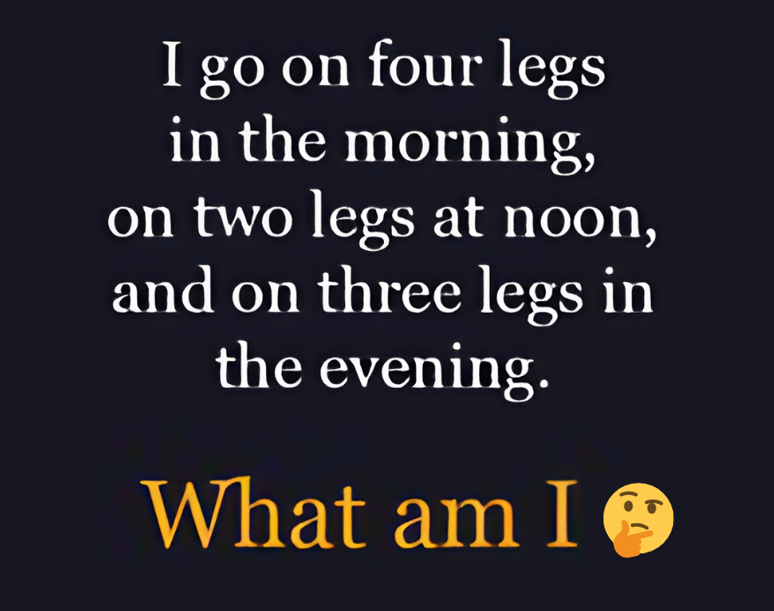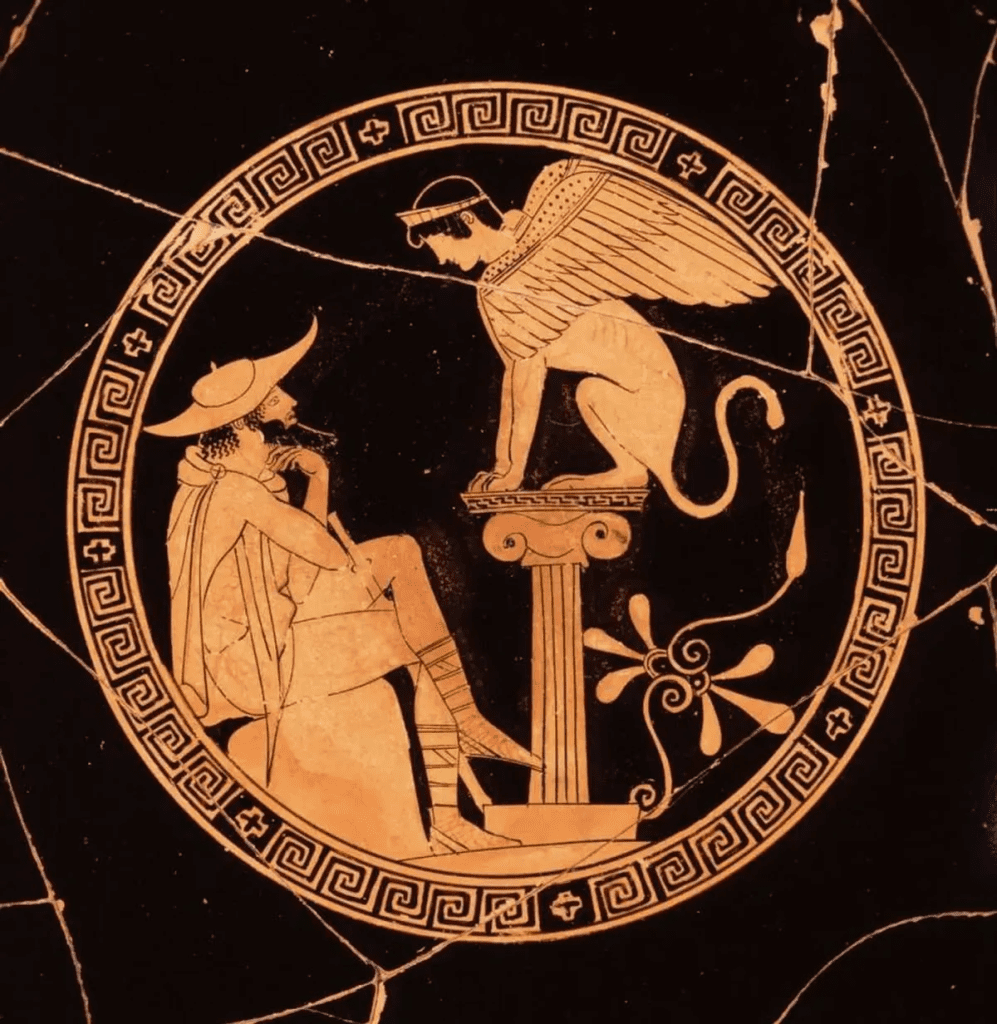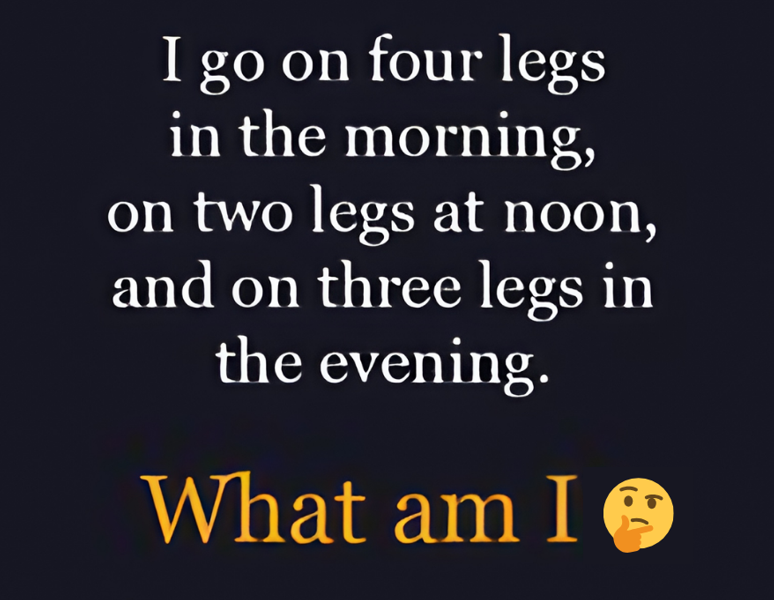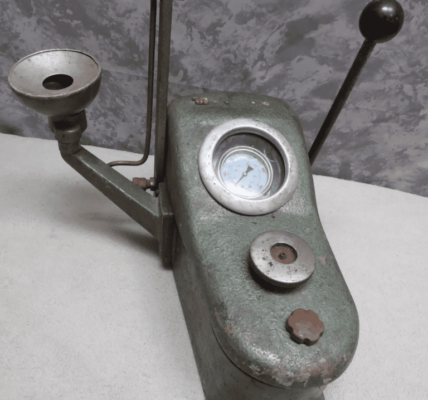The Riddle of the Sphinx has captivated imaginations for centuries. Rooted in Greek mythology, this ancient riddle is more than just a test of intellect; it’s a profound reflection on the journey of human life. In this article, we’ll explore the origins, meaning, and symbolism of the Sphinx and her riddle, and why it continues to resonate with us today.
The Origin of the Riddle of the Sphinx

In Greek mythology, the Sphinx was a formidable creature with the body of a lion, the wings of a bird, and the face of a woman. She was a guardian who terrorized the city of Thebes, challenging anyone who wished to pass with her riddle. Those who failed to answer correctly faced a tragic fate, while the one who succeeded would become a hero. The riddle was posed to Oedipus, a young prince who would later ascend to the throne.
The riddle itself goes as follows:
“What walks on four legs in the morning, two legs in the afternoon, and three legs in the evening?”
Oedipus’s answer, “Man,” not only saved his life but also marked a turning point in his fate. Upon hearing the correct answer, the Sphinx leapt from her perch, ending her reign of terror over Thebes. This event propelled Oedipus into a tragic destiny, intertwining the riddle with themes of fate, wisdom, and human mortality.
Decoding the Riddle: The Stages of Human Life
The answer to the Sphinx’s riddle reveals a metaphor for the different stages of human life:
- Morning (Childhood): In the “morning” of life, we crawl on all fours. This stage represents infancy, where babies are on their hands and knees, learning to navigate the world for the first time.
- Afternoon (Adulthood): As we grow, we stand upright, walking on two legs. This stage signifies the prime of life—our adult years, where we are strong, independent, and capable.
- Evening (Old Age): Finally, in the “evening” of life, we walk with the aid of a cane, representing the third “leg.” This phase reflects old age, when we may need additional support and have gained wisdom through life’s experiences.
The riddle concludes with “no legs at night,” which symbolizes death—the end of life’s journey, where our physical form no longer walks among the living. Each phase, tied to different times of the day, illustrates the natural progression of human life, reminding us of our inevitable aging and mortality.
Oedipus: The Hero Who Solved the Riddle
Oedipus’s ability to solve the riddle demonstrated his intelligence and keen understanding of human nature. In Greek culture, the hero’s journey often involved encounters with challenges that tested not just physical strength, but also wit and wisdom. By solving the riddle, Oedipus proved himself worthy to be king, but his triumph came at a cost.
In answering the Sphinx, Oedipus set his tragic fate into motion. Unbeknownst to him, he would later fulfill a devastating prophecy: killing his father and marrying his mother. The story of Oedipus emphasizes the Greek belief in fate’s inevitable pull, no matter one’s intelligence or strength. It serves as a cautionary tale about the price of knowledge and the limits of human control over destiny.
The Symbolism of the Sphinx

The Sphinx is a rich symbol in Greek mythology, representing mystery, danger, and knowledge. She is not just a physical guardian of Thebes but also a metaphorical one—a gatekeeper of wisdom that can be perilous if misused or misunderstood. Here’s how the Sphinx’s character resonates on a deeper level:
- Guardian of Knowledge: The Sphinx’s riddle is more than a test of cleverness; it’s a test of self-awareness. She guards the path to wisdom, allowing only those who can understand the human experience to pass. In mythology, riddles are often seen as a way to separate those who are truly insightful from those who are not.
- Symbol of Life’s Challenges: The Sphinx represents life’s difficulties that everyone must face. Just as Oedipus had to confront her on his journey, each of us must grapple with questions and challenges that define who we are and shape our lives. Her presence reminds us that growth and understanding come through facing and overcoming trials.
- Emblem of Time’s Passage: By posing a question about the stages of life, the Sphinx embodies the passage of time. Her riddle is timeless, reflecting universal truths about the human condition that are relevant across cultures and eras.
The Riddle’s Reflection on Human Life
The beauty of the Sphinx’s riddle lies in its simplicity and depth. It speaks to a universal truth: the inevitability of aging and the shared journey of life that unites all humans. Whether it’s crawling as an infant, walking upright as an adult, or using a cane in old age, each stage connects us to the same life cycle.
The riddle also serves as a reminder that, despite our accomplishments, we are all bound by the same fate. In our modern world, the riddle of the Sphinx continues to resonate as a meditation on human mortality, the passage of time, and the importance of self-awareness.
Conclusion: Embracing the Lessons of the Sphinx
The Riddle of the Sphinx is more than an ancient puzzle; it’s a powerful reflection on life, aging, and mortality. By posing a question about human existence, the Sphinx invites us to look inward, to recognize the transience of life, and to cherish each moment. Oedipus’s journey serves as a reminder that wisdom and insight are gifts that can guide us but may also come at a cost.
As we ponder the riddle, we’re reminded of our own path through life, each stage building upon the last until we reach our final rest. The story of the Sphinx and Oedipus lives on, not just as a testament to the power of knowledge, but as a reminder that the answers we seek are often hidden within the questions themselves. In a world filled with complexity and uncertainty, the Riddle of the Sphinx remains a timeless guide, inviting us to explore the mysteries of life and our place within it.




